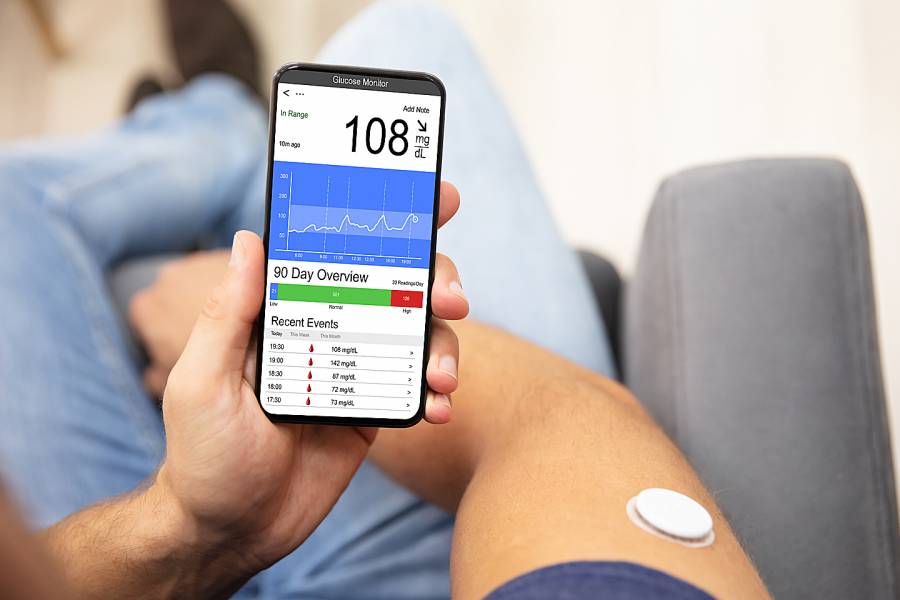This content is provided to Johns Hopkins University employees through a partnership with BCBS.
More and more Americans are being diagnosed with diabetes. In fact, 9.4% of the U.S. population—30.3 million Americans—have this chronic condition.
Diabetes is a condition in which blood glucose (sugar) is too high. The body uses sugar from food as a source of energy, and insulin, a hormone made in the pancreas, moves sugar from the bloodstream into the cells to be used for energy. When you have diabetes, your body either does not make enough insulin or does not use it as well as it should. As a result, sugar builds up in the blood, leading to serious health complications that can include heart disease, blindness, kidney failure, and lower-extremity issues.
What causes diabetes?
The underlying cause of diabetes is unknown, although we do know that both genetics and lifestyle play significant parts. There are different forms of diabetes.
Type 1 diabetes
Chronic diabetes conditions include types 1 and 2. Type 1 is an autoimmune condition that occurs when the immune system attacks and destroys the cells in the pancreas that make insulin. People with type 1 diabetes don't produce insulin. Genes may cause this type of diabetes, which often begins in childhood.
Type 2 diabetes
About 90% of people with diabetes have type 2, which occurs when the body does not use insulin efficiently, and the pancreas, as the condition progresses, does not make enough insulin. Those who have it don't respond to insulin as well as they should. Genetics, lifestyle, and environmental factors play a role in type 2.
Gestational diabetes
Insulin resistance that occurs in a woman during pregnancy is called gestational diabetes. It usually occurs in 2% to 10% of pregnancies and typically goes away after birth. It's important to control gestational diabetes not only to protect the baby's growth and development but because women who have it are at risk of developing type 2 weeks, or even years, after giving birth.
Prediabetes
Prediabetes is when your blood sugar is higher than it should be but not high enough for diabetes. More than a third of people in the United States have the condition, but most are unaware. Prediabetes can make you more likely to get type 2 diabetes and heart disease.
Who gets diabetes?
One in four Americans who has diabetes doesn't know it. You are more likely to develop prediabetes or type 2 diabetes if you are 45 or older, have a family history of diabetes, or are overweight. Physical inactivity, race, and certain health problems also affect chances of developing prediabetes or type 2 diabetes.
Know your risk
It's important to know your risk factors. The American Diabetes Association provides a free risk test for type 2 diabetes that can help you understand your own risk. Some factors can be controlled, but others cannot.
Uncontrollable risk factors include family history (any blood relative with diabetes increases your own risk), ethnic background (African Americans, Latino/Hispanic Americans, Native Americans, and Pacific Islanders are at greater risk), age (the older you are, the greater your risk), and history of gestational diabetes.
Other risk factors are overweight/obesity, physical inactivity, high blood pressure, and abnormal cholesterol levels.
Symptoms
Frequent urination, excessive thirst, unexplained weight loss, sudden vision changes, extreme hunger, tingling or numbness in the hands or feet, and fatigue are some of the symptoms. If you think you might have diabetes, you should schedule a visit with your primary care provider.
How can diabetes be prevented?
There's no cure for diabetes, but with lifestyle changes and treatment you can live a long, healthy life. Some risk factors such as ethnic background and age are uncontrollable, but there are lifestyle behaviors that can be controlled.
To reduce your risk, keep a healthy weight, eat a well-balanced diet, exercise regularly, limit or avoid alcohol intake, and don't use tobacco. If you have a family history of any medical condition, talk with your doctor.
Support and resources
Talk with your primary care provider about your risk factors and ask if getting tested is right for you. If you do have diabetes, which can be determined with a simple blood test, your provider can work with you to create a treatment plan and recommend lifestyle changes to protect your long-term health and wellness.
Call your medical insurance provider to inquire about specific prediabetes/diabetes support or health coaching programs.
Watch What Is Prediabetes and Diabetes? This on-demand webinar will help you recognize the signs and symptoms of prediabetes and diabetes type 2. Hearing how insulin and sugar work together in the body can help you understand what is going on. To access the webinar, visit the Workshops & Webinars page of the Benefits & Worklife website.
Find out how WW (formerly Weight Watchers) can help. Learn how to use WW as a diabetes prevention program. The university has partnered with WW to offer a discounted rate on its weight-loss program; join by Dec. 12 and get a coupon for a free slow cooker cookbook with a WW shop order of $25.
Posted in Health+Well-Being
Tagged hr newswire








